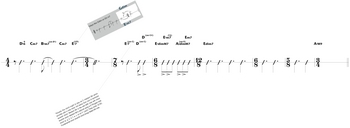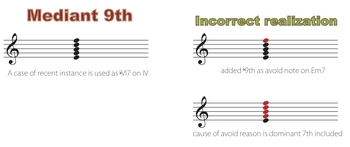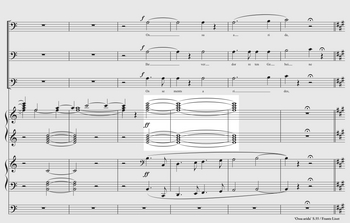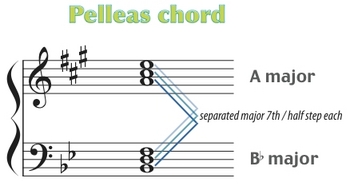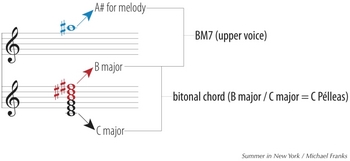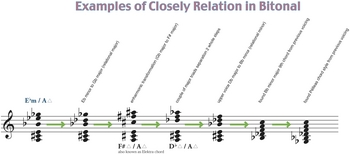Lifesigns first impression -Track 1- Lighthouse [プログレ]
A prog CD that I got first one in 2013 was Lifesigns' one.
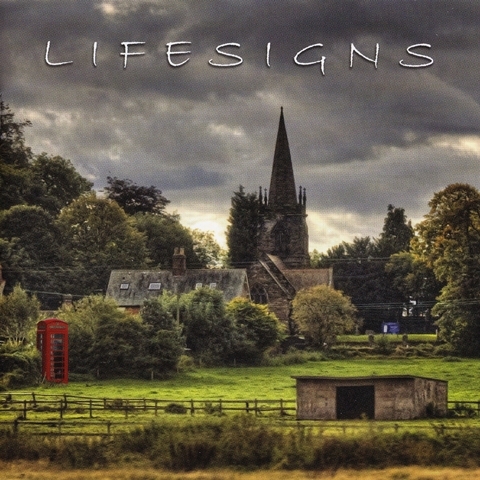 Now I'm hooked on it. To be sure, whole sound and atmosphere may be align too much, but recent DAW recording works make us treat their sound too much. sometimes it brings some 'grid-feel' and no intonation tempo, but I don't care about it. I really prefer tasting harmony, so now I write down their brilliant chord works. A most favorite tune of Lifesingns that I mind is 'Carousel'. 'Carousel' must be the great tune and feeling like 'Mumps' at 21st century :). A piano briidge of Carousel is like Hindemith's 'Ludus Tonalis'. Anyway I write down a review their song each following. Thanks for reading and yet my English skill is extremery bad.
Now I'm hooked on it. To be sure, whole sound and atmosphere may be align too much, but recent DAW recording works make us treat their sound too much. sometimes it brings some 'grid-feel' and no intonation tempo, but I don't care about it. I really prefer tasting harmony, so now I write down their brilliant chord works. A most favorite tune of Lifesingns that I mind is 'Carousel'. 'Carousel' must be the great tune and feeling like 'Mumps' at 21st century :). A piano briidge of Carousel is like Hindemith's 'Ludus Tonalis'. Anyway I write down a review their song each following. Thanks for reading and yet my English skill is extremery bad.
Verse A of first track which is called 'Lighthouse' is really neat lydian sound as D major / C major. The atmosphere of this makes contrast up better.
You can find some brilliant chords at 2:30 CD time as following;
D♭6 (9) -> Cm7 -> B♭m7 (on D♭) -> Cm7 -> Eb7 (#9)...
A chord which named 'Mediant 9th' is built on major scale's third degree or genuine 5 voiced 9th chord which is pre-transformed to dominant 7th as fifth degree on parallel minor key.
Normally case, we learn how to control avoid note with tonality though, cause of detouring avoid note is meant existing dominant 7th included.
Let the being G7 as dominant 7th chord on key in C major, if you added a note 'e' to g7, this chord seems like added flatted 9th on Em7 or added a note minor 3rd lower from G7. A conclusion of first step learning is keeping away from avoid note. Not using of dominant 7th included otherwise on 'dominant scene'.
Indeed, an example scene in avoid note f on CM7, this must be the real scene of 'dominant 7th included', notes of g,b,f suggest appearance dominant 7th included and yet it is at 'tonic scene'. Using dominant-feel on tonic is foolish, yep, I think so when I was young. As we learn basic music tonality. However we learn more music tonality, using chord styles of IIm7/V, IV/V and so on, these are popular case. Perceptible of tonic, sub dominant and dominant is like RGB style of the view. Using the case of 'on-chord', hybrid chord style might be CMYK style as music scene. Similar cases of will be found elsewhere.
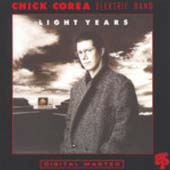
A song titled 'Flamingo' which written by Chick Corea is good case of use next step tonality. Flamingo's key signature is D minor, he uses chord cadences following;
Dm7 -> Bb7/G same as Im7 to bVI7/IV
You'll find a case of mediant 9th, in recent music scene, case of using mediant 9th ought to play bVI7/IV. Most important clue is having #4th or b5th note in tonality, a 7th note of bVI7 (Bb7 in D minor) brings for that. Recent case of using mediant 9th is not use in 3rd degree in major scale.
Carefully understanding is mediant 9th never be the same as like using added flatted 9th note of minor seventh chord. A conventional realization for handling avoid note on minor 7th chord can not replace for handling flatted 9th note on minor 7th chord.
A case of ignoring avoid note which like evading flatted 9th on minor 7th chord is a normally correct explanation for handling avoid note in normal heptatonic tonality system (including dominant 7th on itself tonality), however correct realization of mediant 9th is an utterly differnce case.
An example of recent mediant 9th is found on 'Flamingo' of Chick Corea Elektric Band. The mediant 9th chord works as bVI7 on V in D minor key, it means Bb7 on G in D minor. A 7th note of Bb7 just provides for obtaining #4th or b5th note in itself tonality. Chick's mediant 9th might be for obtaining bluesy-feel, the other effect of using mediant 9th is deviating from tonality.
Let the mediant 9th sunlit, besides let being you praying in the darkness. You can hardly see the light in the darkness, but you may also predict appearance direction of the light. The grand effect of mediant 9th is appearance from different direction beyond your expectation. It's just like the advent of God in front of you :) We can feel tonality in music. The maximum effect of mediant 9th ought to be teasing tonality. You may call it 'key-teaser'.
Another grand appearance case is found on 'Ossa arida' of Franz Liszt (S.55). This case is known as E phrygian total, it means a case of using all diatonic notes (mode scale is E phrygian). As building 3rd interval in E phrygian (of course keeping tonal in C), notes layered by 3rd following;
e,g,b,d,f,a,c,e
This example seems rarely kinky case, because it is not only including dominant 7th, but also mediant 9th. 'Diatonic total' includes any functions which following as tonic, sub dominant and dominant.
Fundamental knowledge of tonality in music is obviously strong and important, however 'strong-feel' rule ought to keep in older church modes, otherwise in other heptatonic which is in non-church modes system.
For example, harmonic major (c, d, e, f, g, ab, b, c) and melodic major (c, d, e, f, g, ab, bb, c) are belong non-church modes, these are other heptatonic. Those and other heptatonic except church modes may be existing escaping for strong tonality.
Once we know denser tonality system, sometimes we can find bitonaly and polytonaly harmony. An example bitonal chord which are built couple of two major triads separated major 7th interval each is found on Pélleas and Mellisande of Debussey.
Some 'past' suspended notes builds hyper-harmony sound to the next chord. 2nd example of Lighthouse at 6:30~ CD time, you can find on suspended Pélleas chords as D major on E bmajor like this;
Cmaj -> Ebmaj -> Gminor/Dmaj(inverted voicing upper and lower from GmM9, because GmM9 is also built from Dmaj on Gminor) -> Fmajor -> Fmaj / Ebmaj -> Dmaj / Ebmaj... and then appears C#maj / Dmaj
Obseriving Pélleas chord is very important. Pélleas surely provides you 6 voiced harmony, it includes symmetrical interval chord. It is including minor-major 9th chord.
Minor-major 9th chord is built 5 notes which are root, minor 3rd, perfect 5th, major 7th and major 9th, watch perfect 5th note of minor-major 9th chord. Spreading equal interval above and below each.
This symmetrical structure or called 'mirrored interval' sometimes appears at bitonal chord scene. At Pélleas chord appearance, minor-major 9th chord is included in it. Besides, at dur-moll chord appearance, minor-major 7th chord is included in it.
Minor-major 7th chord which built as a diatonic chord, it ought to be in non-church mode scale. Melodic minor mode, harmonic minor mode, hungarian minor and so on, these modes bring minor major 7th chord as a diatonic.
The diatonic system which not belongs to church mode system is no perfect strange one. It might feel thin-tonal, but thin tonality brings polymodality feel for a purpose. So, a chord as minor-major 7th appears either in Pélleas chord or in dur-moll chord.
An example of Lighthouse is no vertically harmony as Pélleas chord, but suspended notes provide bitonal atomosphere.
Elastic Dummy / Yukihiro Takahashi / 'Saravah'
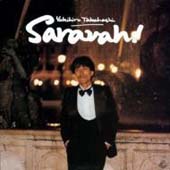
Summer in New York / Michael Franks / 'Time Together'
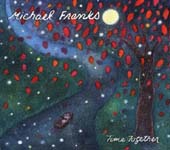
Also you find on minor-major 9th chord from intro of 'Incognito' by Spyro Gyra.
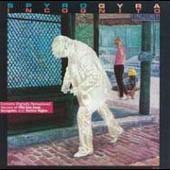
In addition, brilliance chord works in Lighthouse is at 9:08 CD time.
F#m -> E# major/F# -> F#M7aug -> AM7 (on E) -> Bbdim -> A major/Ebsus4 -> A major/Eb minor -> Dm9 -> Bb7(9,#11,13) -> Dm7 (9,11) -> Bb7 (9,#11) -> Ab/Bb -> F#mM9 -> A major /Emajor -> Ebm7(b5) -> Eb7 (#9,11) -> Dm9 -> Ab major /Bb major -> Dm9(11) -> Ab major / Bb major ...
Watch this A major / Eb minor is nearly existing Gb major / A major (also known as Elektra chord by R. Strauss and Scriabin). Elektra brings a down-stair from those one. Let a triad of F minor or Ab major is existing at there, it brings for next chord as down-stair. this bitonal chord which named 'dur-moll' chord is used by Bartok (from 'Bela Bartok An Analysis of his music' by Ernoe Lendvai).
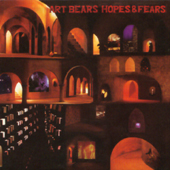
Another famous case of use dur-moll chord is found on 'In Two Minds' and 'Labyrinth' of Art Bears.
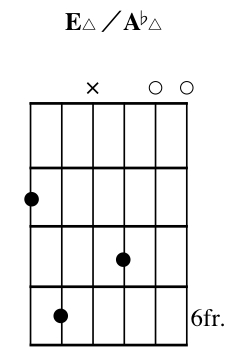
However, this bitonal chord example isn't dur-moll chord. Realizing carefully. Art Bears' example is another bitonal chord, it means 'living-together' of flat sub-mediant major and tonic major. You may also find the contrast between dur-moll and flat sub-mediant major and tonic major.
I guess you will be able to find many brilliant works from Lifesigns' chord works.
*An appearance of 'Eb minor / A major' brings source of 'F# major / A major' as Elektra chord. Most famous using elektra chord in progressive rock scene is 'Danger Money' / UK. A chord of song header is C# major / E major (lower voicing is just better as power chord of E (e and b) and adding upper voice as C# major). You can see 'metamorphosis' from bitonal chords by closer relationship like this.
`fixed 2 example pictures (forgot flatten for 3rd bass note Bbm7 (on Db) at 1st bridge of chords, explaination of symmetrical structure for DmM9)

Verse A of first track which is called 'Lighthouse' is really neat lydian sound as D major / C major. The atmosphere of this makes contrast up better.
You can find some brilliant chords at 2:30 CD time as following;
D♭6 (9) -> Cm7 -> B♭m7 (on D♭) -> Cm7 -> Eb7 (#9)...
A chord which named 'Mediant 9th' is built on major scale's third degree or genuine 5 voiced 9th chord which is pre-transformed to dominant 7th as fifth degree on parallel minor key.
Normally case, we learn how to control avoid note with tonality though, cause of detouring avoid note is meant existing dominant 7th included.
Let the being G7 as dominant 7th chord on key in C major, if you added a note 'e' to g7, this chord seems like added flatted 9th on Em7 or added a note minor 3rd lower from G7. A conclusion of first step learning is keeping away from avoid note. Not using of dominant 7th included otherwise on 'dominant scene'.
Indeed, an example scene in avoid note f on CM7, this must be the real scene of 'dominant 7th included', notes of g,b,f suggest appearance dominant 7th included and yet it is at 'tonic scene'. Using dominant-feel on tonic is foolish, yep, I think so when I was young. As we learn basic music tonality. However we learn more music tonality, using chord styles of IIm7/V, IV/V and so on, these are popular case. Perceptible of tonic, sub dominant and dominant is like RGB style of the view. Using the case of 'on-chord', hybrid chord style might be CMYK style as music scene. Similar cases of will be found elsewhere.

A song titled 'Flamingo' which written by Chick Corea is good case of use next step tonality. Flamingo's key signature is D minor, he uses chord cadences following;
Dm7 -> Bb7/G same as Im7 to bVI7/IV
You'll find a case of mediant 9th, in recent music scene, case of using mediant 9th ought to play bVI7/IV. Most important clue is having #4th or b5th note in tonality, a 7th note of bVI7 (Bb7 in D minor) brings for that. Recent case of using mediant 9th is not use in 3rd degree in major scale.
Carefully understanding is mediant 9th never be the same as like using added flatted 9th note of minor seventh chord. A conventional realization for handling avoid note on minor 7th chord can not replace for handling flatted 9th note on minor 7th chord.
A case of ignoring avoid note which like evading flatted 9th on minor 7th chord is a normally correct explanation for handling avoid note in normal heptatonic tonality system (including dominant 7th on itself tonality), however correct realization of mediant 9th is an utterly differnce case.
An example of recent mediant 9th is found on 'Flamingo' of Chick Corea Elektric Band. The mediant 9th chord works as bVI7 on V in D minor key, it means Bb7 on G in D minor. A 7th note of Bb7 just provides for obtaining #4th or b5th note in itself tonality. Chick's mediant 9th might be for obtaining bluesy-feel, the other effect of using mediant 9th is deviating from tonality.
Let the mediant 9th sunlit, besides let being you praying in the darkness. You can hardly see the light in the darkness, but you may also predict appearance direction of the light. The grand effect of mediant 9th is appearance from different direction beyond your expectation. It's just like the advent of God in front of you :) We can feel tonality in music. The maximum effect of mediant 9th ought to be teasing tonality. You may call it 'key-teaser'.
Another grand appearance case is found on 'Ossa arida' of Franz Liszt (S.55). This case is known as E phrygian total, it means a case of using all diatonic notes (mode scale is E phrygian). As building 3rd interval in E phrygian (of course keeping tonal in C), notes layered by 3rd following;
e,g,b,d,f,a,c,e
This example seems rarely kinky case, because it is not only including dominant 7th, but also mediant 9th. 'Diatonic total' includes any functions which following as tonic, sub dominant and dominant.
Fundamental knowledge of tonality in music is obviously strong and important, however 'strong-feel' rule ought to keep in older church modes, otherwise in other heptatonic which is in non-church modes system.
For example, harmonic major (c, d, e, f, g, ab, b, c) and melodic major (c, d, e, f, g, ab, bb, c) are belong non-church modes, these are other heptatonic. Those and other heptatonic except church modes may be existing escaping for strong tonality.
Once we know denser tonality system, sometimes we can find bitonaly and polytonaly harmony. An example bitonal chord which are built couple of two major triads separated major 7th interval each is found on Pélleas and Mellisande of Debussey.
Some 'past' suspended notes builds hyper-harmony sound to the next chord. 2nd example of Lighthouse at 6:30~ CD time, you can find on suspended Pélleas chords as D major on E bmajor like this;
Cmaj -> Ebmaj -> Gminor/Dmaj(inverted voicing upper and lower from GmM9, because GmM9 is also built from Dmaj on Gminor) -> Fmajor -> Fmaj / Ebmaj -> Dmaj / Ebmaj... and then appears C#maj / Dmaj
Obseriving Pélleas chord is very important. Pélleas surely provides you 6 voiced harmony, it includes symmetrical interval chord. It is including minor-major 9th chord.
Minor-major 9th chord is built 5 notes which are root, minor 3rd, perfect 5th, major 7th and major 9th, watch perfect 5th note of minor-major 9th chord. Spreading equal interval above and below each.
This symmetrical structure or called 'mirrored interval' sometimes appears at bitonal chord scene. At Pélleas chord appearance, minor-major 9th chord is included in it. Besides, at dur-moll chord appearance, minor-major 7th chord is included in it.
Minor-major 7th chord which built as a diatonic chord, it ought to be in non-church mode scale. Melodic minor mode, harmonic minor mode, hungarian minor and so on, these modes bring minor major 7th chord as a diatonic.
The diatonic system which not belongs to church mode system is no perfect strange one. It might feel thin-tonal, but thin tonality brings polymodality feel for a purpose. So, a chord as minor-major 7th appears either in Pélleas chord or in dur-moll chord.
An example of Lighthouse is no vertically harmony as Pélleas chord, but suspended notes provide bitonal atomosphere.
Elastic Dummy / Yukihiro Takahashi / 'Saravah'

Summer in New York / Michael Franks / 'Time Together'

Also you find on minor-major 9th chord from intro of 'Incognito' by Spyro Gyra.

In addition, brilliance chord works in Lighthouse is at 9:08 CD time.
F#m -> E# major/F# -> F#M7aug -> AM7 (on E) -> Bbdim -> A major/Ebsus4 -> A major/Eb minor -> Dm9 -> Bb7(9,#11,13) -> Dm7 (9,11) -> Bb7 (9,#11) -> Ab/Bb -> F#mM9 -> A major /Emajor -> Ebm7(b5) -> Eb7 (#9,11) -> Dm9 -> Ab major /Bb major -> Dm9(11) -> Ab major / Bb major ...
Watch this A major / Eb minor is nearly existing Gb major / A major (also known as Elektra chord by R. Strauss and Scriabin). Elektra brings a down-stair from those one. Let a triad of F minor or Ab major is existing at there, it brings for next chord as down-stair. this bitonal chord which named 'dur-moll' chord is used by Bartok (from 'Bela Bartok An Analysis of his music' by Ernoe Lendvai).

Another famous case of use dur-moll chord is found on 'In Two Minds' and 'Labyrinth' of Art Bears.

However, this bitonal chord example isn't dur-moll chord. Realizing carefully. Art Bears' example is another bitonal chord, it means 'living-together' of flat sub-mediant major and tonic major. You may also find the contrast between dur-moll and flat sub-mediant major and tonic major.
I guess you will be able to find many brilliant works from Lifesigns' chord works.
*An appearance of 'Eb minor / A major' brings source of 'F# major / A major' as Elektra chord. Most famous using elektra chord in progressive rock scene is 'Danger Money' / UK. A chord of song header is C# major / E major (lower voicing is just better as power chord of E (e and b) and adding upper voice as C# major). You can see 'metamorphosis' from bitonal chords by closer relationship like this.
`fixed 2 example pictures (forgot flatten for 3rd bass note Bbm7 (on Db) at 1st bridge of chords, explaination of symmetrical structure for DmM9)
2013-02-07 10:33
